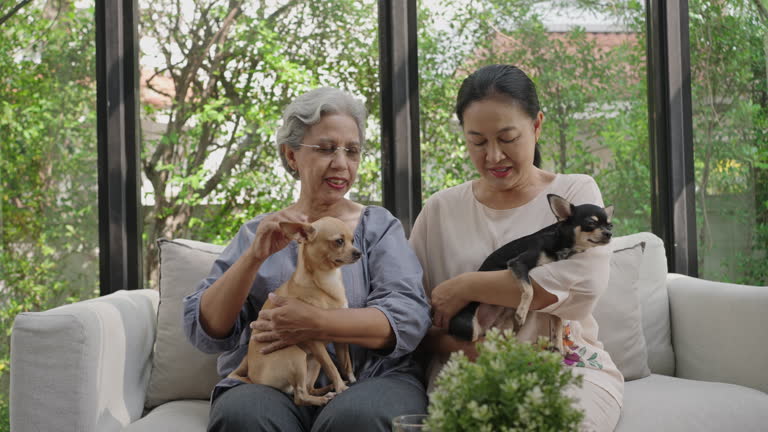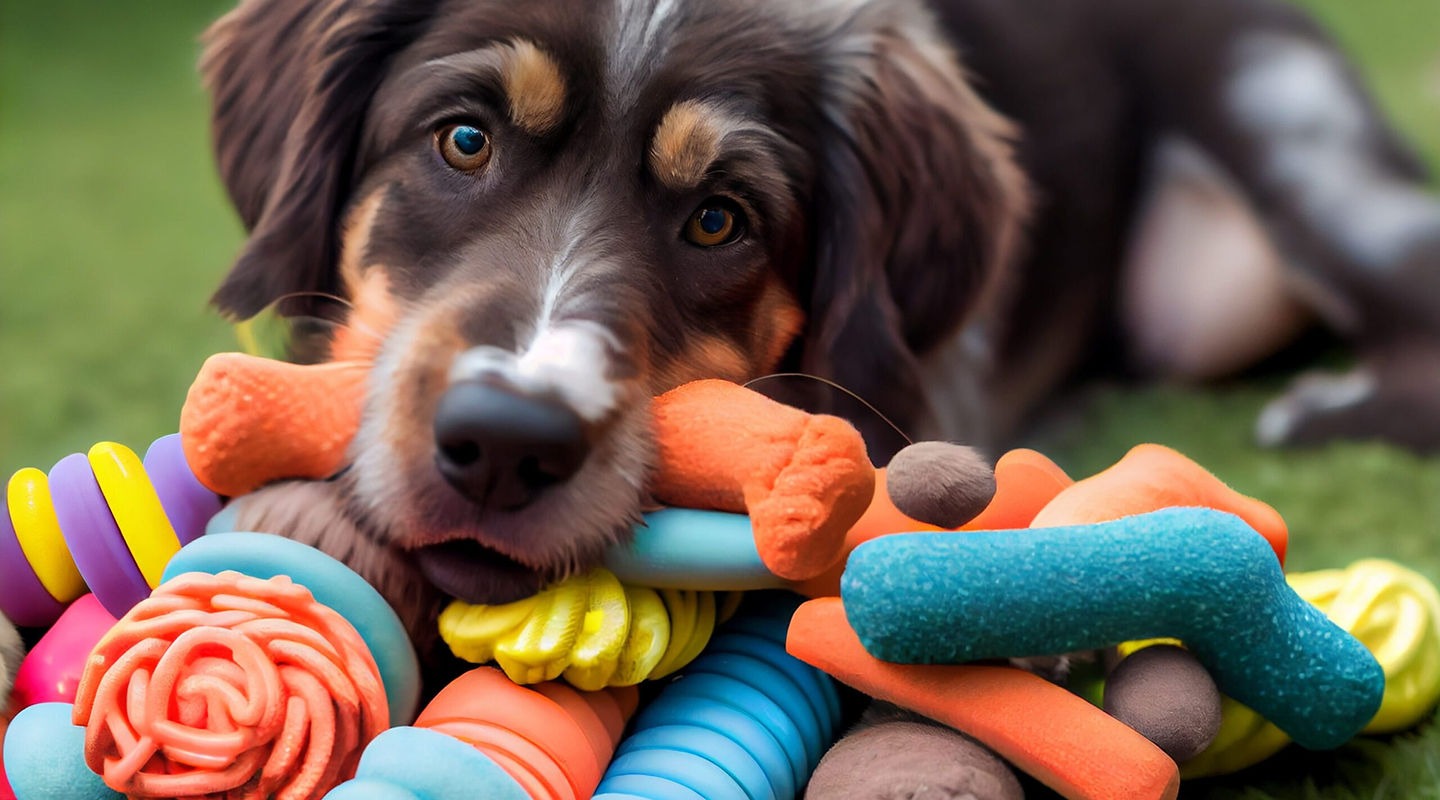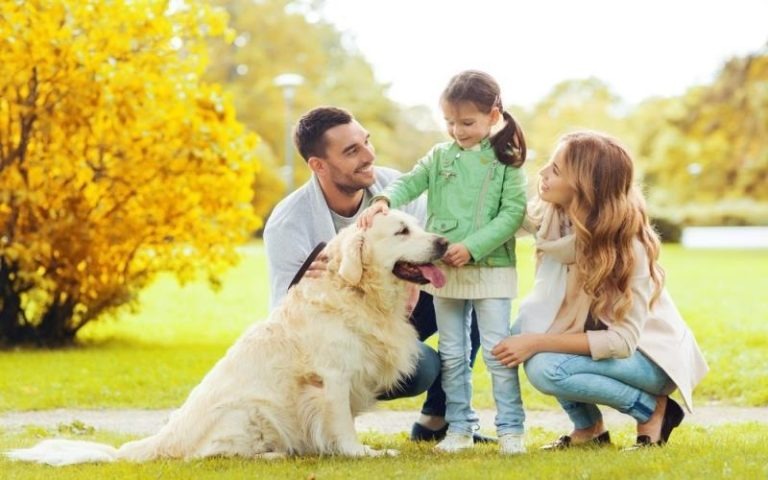
The Most Talkative Pet Breeds: Which Ones Will Keep You Entertained?
Discover the most vocal pet breeds, from chatty parrots to talking dogs, and explore how their personalities and intelligence lead them to communicate in ways that will keep you amused and engaged.
🐶 Pet Star
50 min read · 11, Mar 2025

Introduction: The Charm of Talkative Pets
If you're looking for a pet that will not only bring joy but also engage you in lively conversations, you're in for a treat. Some pets are naturally more vocal than others, and these talkative breeds are a source of endless entertainment. Whether you're fascinated by a parrot that mimics human speech or a dog that responds with a series of barks and howls, certain pet breeds are notorious for their ability to "speak" up.
In this article, we will explore the most talkative pet breeds, providing insights into their unique communication styles, the science behind their vocal abilities, and how their vocalization can foster an even deeper bond between pets and their owners.
1. The Parrot: The Ultimate Talkative Pet
Why Parrots Are So Talkative
Parrots, especially species like the African Grey Parrot and the Amazon Parrot, are renowned for their vocal skills. These birds are not only excellent mimics but can also form connections with their human companions through conversation-like exchanges. Parrots have the ability to imitate human speech and sounds from their environment, which makes them incredibly entertaining.
Famous Talkative Parrot Breeds
- African Grey Parrot: Widely regarded as one of the most intelligent bird species, the African Grey Parrot is famous for its ability to learn hundreds of words. These parrots can also use words in context, responding to their owners' questions or emotions with appropriate phrases.
- Amazon Parrot: Known for their outgoing personalities, Amazon parrots are highly social and talkative. They love interacting with their human companions and can learn a variety of words and phrases, often mimicking household sounds as well.
- Cockatoos: While not as skilled at mimicking speech as African Greys, Cockatoos are highly vocal and enjoy "talking" through whistling and squawking. Their loud nature makes them great for owners who are looking for an entertaining, chatty pet.
How Parrots Learn to Talk
Parrots don't have vocal cords like humans but instead use a specialized part of their anatomy called the syrinx, which allows them to produce a wide range of sounds. Their ability to mimic sounds comes from their extraordinary intelligence and strong social nature. Parrots learn to speak by hearing and repeating sounds from their environment, especially if they associate certain words with positive experiences.
2. The Siamese Cat: A Chatty Feline Friend
Why the Siamese Is So Vocal
Siamese cats are known for their distinctive vocalizations, often described as a "yowl" or "meezer." Unlike many other cat breeds, the Siamese is incredibly social and communicates frequently with its owners. Their talkative nature makes them one of the most engaging cat breeds, often holding long "conversations" with their human companions.
Personality Traits of the Siamese Cat
The Siamese cat is highly intelligent and loves interaction. They are extremely affectionate and form strong bonds with their human family members. If you’re not actively engaging with a Siamese cat, you may find them "talking" to you in hopes of getting your attention. They communicate through a variety of sounds, from gentle purring to louder, more demanding meows.
Why They Talk So Much
The vocal nature of the Siamese cat is likely a result of their social behavior and need for interaction. In the wild, cats are more solitary animals, but the Siamese breed has been selectively bred for companionship, leading to their communicative nature. Siamese cats tend to meow or "talk" when they want food, attention, or simply to let their owners know they're nearby.
3. The Dachshund: A Little Dog with Big Opinions
Why Dachshunds Are So Vocal
Dachshunds, or "wiener dogs," are known for their big personalities and vocal nature. While they may be small, they aren't afraid to voice their opinions. Whether they are barking at the doorbell, warning you of strangers, or demanding attention, Dachshunds communicate clearly with their owners.
Typical Sounds from a Dachshund
- Barks: Dachshunds often bark to alert their owners of any unfamiliar sound or presence. Their bark can be surprisingly loud for such a small dog.
- Howls: Like many small breeds, Dachshunds are known to howl, especially when they feel ignored or are left alone for too long. Their howls are often used to express dissatisfaction or loneliness.
- Whines: Dachshunds can also whine to express their desires, such as asking for food, attention, or a walk.
Training a Dachshund to Reduce Excessive Barking
While Dachshunds are naturally vocal, it is possible to train them to bark less. Positive reinforcement methods can help encourage them to stop barking on command or to use other methods of communication instead. However, it’s important to remember that barking is part of their breed’s nature.
4. The Yorkshire Terrier: Small but Mighty with Its Voice
Why Yorkies Love to Talk
The Yorkshire Terrier, or Yorkie, is a small dog breed that is particularly known for its big voice. Despite their small stature, Yorkies are not shy about letting their owners know what’s going on in their world. They are quick to bark at anything they deem suspicious, including the sound of a car approaching or a visitor arriving at the door.
Yorkie Communication Styles
Yorkies tend to be extremely loyal and protective, so their vocalizations often reflect a desire to protect their owners. They bark when they sense a threat or when they want to express excitement. They can also be trained to use quieter forms of communication, but their natural inclination is to vocalize.
Why Yorkies Are So Vocal
Yorkies are descended from terrier breeds known for their hunting instincts. The breed’s vocal nature is part of its history as a small working dog bred to hunt rats and other small animals. The dog’s instinct to bark and alert its owner has been preserved throughout its development as a companion breed.
5. The Border Collie: Herding Dogs with a Voice
Why Border Collies Are So Vocal
Border Collies are known as one of the smartest dog breeds in the world, and their vocalization habits reflect their high intelligence. Border Collies are typically used as working dogs for herding sheep, and part of their communication with their handlers involves barking and other vocal cues.
Vocalization in Border Collies
- Barks and Whistles: Border Collies often bark or whistle while working to get the attention of their handler or to move the herd in a particular direction.
- Whines and Howls: They may whine when they want attention or when they’re eager to work. Their vocalizations are closely tied to their tasks, and they tend to be more vocal when they’re active and engaged.
Why They Talk
The vocal nature of Border Collies can be attributed to their herding instincts. As working dogs, they communicate with their human companions to carry out tasks, and these vocalizations are a key part of their behavior. Border Collies thrive in environments where they can communicate with humans and stay mentally stimulated.
6. The Beagle: A Talking Hound
Why Beagles Are So Talkative
Beagles are famous for their keen sense of smell and their vocal nature. They were originally bred as hunting dogs, and their vocalizations were essential for alerting hunters to the presence of prey. Today, Beagles retain their vocal tendencies, making them one of the most talkative dog breeds.
Beagle Communication
- Barking: Beagles bark to alert their owners to interesting scents or sights, often in a high-pitched, persistent manner.
- Howling: Beagles are known for their howls, especially when they sense something that excites them, such as the smell of food or a potential threat.
- Whining: Beagles also whine when they want attention or are feeling impatient. Their high energy and vocal tendencies make them highly expressive.
Why Beagles Talk So Much
The Beagle’s vocal nature comes from their history as scent hounds used in hunting. They were bred to track and locate game, using their voices to communicate with their handlers. Although they are now primarily kept as pets, their innate desire to vocalize has remained a significant part of their personality.
7. The Maine Coon Cat: The Gentle Giant with a Voice
Why Maine Coons Are Vocal
The Maine Coon is one of the largest domestic cat breeds, and while they are known for their size and strength, they are also surprisingly vocal. Maine Coons communicate with a variety of sounds, from chirps to trills, making them one of the more talkative cat breeds.
Personality of the Maine Coon
Maine Coons are gentle and affectionate, and they are known to be more social than other cat breeds. Their vocalizations often come as a result of their desire for attention or interaction with their human family members.
Why They Talk
Maine Coons have a rich history as working cats, often used on farms to hunt rodents. Their vocalizations were useful for alerting humans or other animals to their presence. Today, Maine Coons still use their voices to express themselves, particularly when they want food, attention, or to be let outside.
8. The Chihuahua: Tiny Dog, Big Voice
Why Chihuahuas Are So Talkative
Despite their small size, Chihuahuas are known for their bold personalities and surprisingly loud barks. These tiny dogs are fearless and don’t hesitate to express themselves through a range of vocalizations. Their vocal nature makes them excellent watchdogs, as they alert their owners to any potential intruders or changes in their environment.
Common Sounds from a Chihuahua
- Barks: Chihuahuas are quick to bark when they sense a change in their surroundings, such as a stranger entering the house, or even a change in the weather. Their high-pitched bark is often more pronounced than one might expect from such a small dog.
- Whines and Whimpers: Chihuahuas often whine when they want attention, food, or if they’re feeling neglected. Their whimpers can be particularly intense when they’re trying to convey their needs.
- Growls and Howls: Like other small dog breeds, Chihuahuas will also growl or howl when they’re upset or frustrated. This can sometimes be a result of feeling insecure or territorial.
Why Chihuahuas Are So Vocal
Chihuahuas have an instinctive need to protect their territory, and their vocalizations are a way of marking their space and alerting their owners to potential threats. Despite their diminutive size, Chihuahuas believe they have the voice of a much larger dog, and they use it freely.
9. The Cocker Spaniel: A Loving, Chatty Companion
Why Cocker Spaniels Are Vocal
Cocker Spaniels are known for their sweet, affectionate nature and are among the more talkative dog breeds. While they are generally friendly and well-mannered, they are also quite vocal, and they love to "speak" with their owners. Their range of vocalizations can express joy, excitement, and a desire for attention.
Sounds Cocker Spaniels Make
- Barks: Cocker Spaniels bark when they are excited, alerting their owners to the arrival of guests or even to express their happiness when playing.
- Howls and Whines: This breed may howl or whine when they are left alone or feel lonely. Their cries are often heartwarming and may tug at their owner’s heartstrings.
- Murmurs and Whimpers: Cocker Spaniels may also murmur or whimper when they are seeking attention or affection. These gentle vocalizations are often accompanied by body language, such as wagging their tails or tilting their heads.
Why They Are So Vocal
Cocker Spaniels are bred to be companion dogs and enjoy interacting with humans. Their vocalizations are often an attempt to maintain engagement with their owners. Additionally, as a sporting dog, they are used to being alert and responsive, which contributes to their vocal nature.
10. The Jack Russell Terrier: High Energy, High Vocalization
Why Jack Russells Are So Talkative
The Jack Russell Terrier is an energetic and intelligent breed that loves to be heard. Known for their boundless enthusiasm, Jack Russells tend to vocalize frequently, especially when they’re excited or feeling playful. Their energy levels mean that they often bark, whine, or even "talk" to keep things interesting.
Jack Russell Sounds
- Barks: Jack Russells are quick to bark at anything that catches their attention, including movement outside, a new person, or a new toy. Their barks can be sharp and persistent, signaling their eagerness or alertness.
- Whines and Whimpers: As a highly social breed, Jack Russells will often whine if they are left alone or feel neglected. They may also whimper when they want something, such as attention or food.
- Howls: Some Jack Russells have a tendency to howl, especially when they hear sirens, loud noises, or other dogs howling in the vicinity. It’s often a result of their deep-seated instincts to communicate with their pack.
Why They Talk So Much
Jack Russells are bred for hunting and are highly energetic dogs. Their constant need to engage with their environment makes them naturally vocal. They use their barks, howls, and whines to interact with both their human family and their surroundings.
11. The Bengal Cat: A Talkative and Affectionate Breed
Why Bengals Are So Vocal
Bengal cats, with their striking leopard-like appearance, are not only known for their beauty but also their vocalization. These cats are incredibly affectionate and social, and they communicate with their owners using a wide range of sounds. Whether it’s a purring chirp or a more persistent meow, Bengals are never shy about expressing themselves.
Types of Vocalizations in Bengals
- Chirps and Chatter: Bengals are known to "chat" with their owners by making chirping sounds, often when they’re curious or excited. These sounds are not only cute but are a way for Bengals to communicate their emotions.
- Meows: Bengals can meow, but their meows are usually more soft and polite, especially when they are seeking attention or food.
- Growls and Hisses: Like most cats, Bengal cats will growl or hiss when they feel threatened, upset, or cornered. These vocalizations serve as a warning for potential danger.
Why Bengals Are So Vocal
The Bengal cat's vocalization is a result of its natural instincts. In the wild, their close relatives (such as the wild leopard and ocelot) are known for vocalizing, and Bengal cats carry on this trait. Bengals are also highly social cats that enjoy engaging with their owners.
12. The English Bulldog: A Relaxed, Yet Vocal Breed
Why Bulldogs Are Talkative
While the English Bulldog might not be as vocal as a Chihuahua or Dachshund, they are still quite expressive and capable of communicating their needs through a variety of sounds. Bulldogs tend to "speak" in their own laid-back manner, but when they do vocalize, it’s typically in a deep, gruff tone.
Typical Bulldog Sounds
- Grumbles and Growls: Bulldogs often communicate with low grumbling noises or occasional growls, particularly when they’re feeling content or protective.
- Snorts and Snuffles: Bulldogs, due to their short snouts, often snort and snuffle while breathing or when they’re particularly excited or happy.
- Barks: Though Bulldogs are generally quiet, they will bark occasionally when they want attention or need to alert their owners to something unusual.
Why Bulldogs Talk in Their Own Way
Bulldogs are naturally more reserved than other breeds, but they still communicate effectively. Their vocalizations are often associated with their laid-back, stubborn nature, and are an endearing part of their charm.
Conclusion
In summary, talkative pets bring an incredible level of interaction and companionship to their owners. Their vocalizations, whether they be barks, meows, chirps, or howls, not only serve to express their needs but also strengthen the bond between pet and human. Whether it’s the energetic Chihuahua alerting its family to every passing car or the vocal Siamese cat engaging in conversations with its owner, these breeds excel in communication, which makes them unique and endearing.
While having a vocal pet can be a source of joy and entertainment, it is important to understand the commitment that comes with it. Talkative pets need attention, mental stimulation, and an outlet for their expressive nature. This is especially true for those breeds that are constantly vocal, such as the Siamese cat or the Jack Russell Terrier, who may require additional patience and training to ensure their communication is manageable.
Moreover, owners must be mindful of their pets’ vocalization triggers and learn to interpret what their pet is trying to convey, whether it’s excitement, hunger, loneliness, or territorial instincts. This allows pet owners to respond in a way that strengthens their bond and enhances the pet-owner relationship.
In the end, selecting a talkative pet can be a delightful choice for those who enjoy an interactive and dynamic relationship. These pets offer not only companionship but also an opportunity to engage in their world, listen to their stories, and appreciate their unique personalities.
Q&A
Q: Which dog breed is the most talkative?
A: The Chihuahua is often considered the most talkative dog breed due to its bold personality and frequent barking, despite its small size.
Q: Do Siamese cats talk a lot?
A: Yes, Siamese cats are well-known for their vocal nature, with their loud, distinctive meows often used to communicate with their owners.
Q: Are there any cats that talk as much as Siamese cats?
A: Yes, the Bengal cat is another highly vocal breed. They make a range of sounds, including chirps, trills, and purrs.
Q: Why do Basenjis not bark?
A: Basenjis are often referred to as "barkless dogs" because they don’t bark in the traditional sense. Instead, they make unique vocalizations such as yodels, called “barroos.”
Q: Why are some dog breeds more vocal than others?
A: Dog breeds that were bred for specific tasks like hunting, guarding, or herding tend to be more vocal because their communication skills were essential for those roles.
Q: Can I train my dog to be quieter?
A: Yes, with consistent training and positive reinforcement, dogs can learn to control their barking. Teaching them when it’s appropriate to vocalize is key.
Q: How can I stop my cat from excessive meowing?
A: Ensure that your cat’s needs are met, such as food, attention, and mental stimulation. Regular playtime and interaction can reduce unwanted meowing.
Q: Which breed of dog is known for whining?
A: The Cocker Spaniel is known for its tendency to whine, especially when seeking attention or feeling neglected.
Q: Do talkative pets require more attention than quieter pets?
A: Yes, talkative pets typically require more attention and mental stimulation to fulfill their emotional needs and prevent excessive vocalizations due to boredom.
Q: Are there any health issues that contribute to a pet’s excessive vocalization?
A: Yes, in some cases, excessive vocalization may be linked to health issues such as anxiety, hearing problems, or discomfort. Consulting a vet can help rule out medical causes.
Similar Articles
Find more relatable content in similar Articles

Sustainable Pet Products: What to Look for in 2025...
As sustainability becomes a ce.. Read More

Vegan Pet Toys and Accessories That Last Longer...
As pet owners grow more eco-co.. Read More

How Climate Change Affects Wild and Domestic Animals...
Climate change is dramatically.. Read More

How Pets Strengthen Family Bonds...
Pets are more than just compan.. Read More
Explore Other Categories
© 2024 Copyrights by rPets. All Rights Reserved.